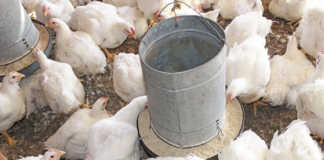DAFF is in the process of reviewing the Agricultural Product Standards Act of 1990 and proposed limiting the brine content in chicken to between 4% and 8% of mass. If DAFF’s proposals are implemented, it would mark a substantial decrease from levels that currently reach up to 30% in frozen chicken portions and 15% in frozen whole birds. The department also wanted to include coverage of the legislation to chicken portions as it currently only covers whole chickens.
SA Poultry Association CEO Kevin Lovell said DAFF had not yet made a definitive statement on the maximum, but expected the legislation to be amended within nine to 15 months. “What we want is a regulation which covers chicken portions and a cap set at a level determined on a reasoned approach that takes into account scientific knowledge, consumer preference, ethical type concerns and current practice. The product has to be safe,” Lovell said.
Brining pushes up the cost of a product that is sold on weight, although processors claim it increases flavour and succulence by counteracting the negative physiological changes in the meat brought by freezing. Lovell said most local producers injected poultry with brine. “A number of importers do this as well. Since most leg quarters now come from the EU, a large percentage is also brined at source. All ‘fast food’ chicken has added flavourants, most of which are brine-based with added flavourants but some are butter-based,” Lovell said.
It is possible that capping will result in lower demand as the taste will not be the same and the price is likely to move up. “Fast food chicken companies have extensive experience on what recipe gives the most consumer satisfaction. If levels were to be capped lower, the consequence would not just be of profit but perhaps a lot of unhappy customers as well,” Lovell said.
Russell Hanger, managing director of wholesale frozen food distributor Merlog Foods and an executive director of the Association of Meat Importers and Exporters (AMIE), said the consumer was being ripped off by current high brining levels.
“We do not believe that adding more than 4% brine increases the value. We believe that levels in excess of this is actually selling expensive water to the consumer, who does not understand the process or cost model of injecting water into chicken to increase weight. Any level above 4% dilutes immensely the natural dietary benefits to the consumer,” Hanger said, adding that he supported efforts to cap levels.












